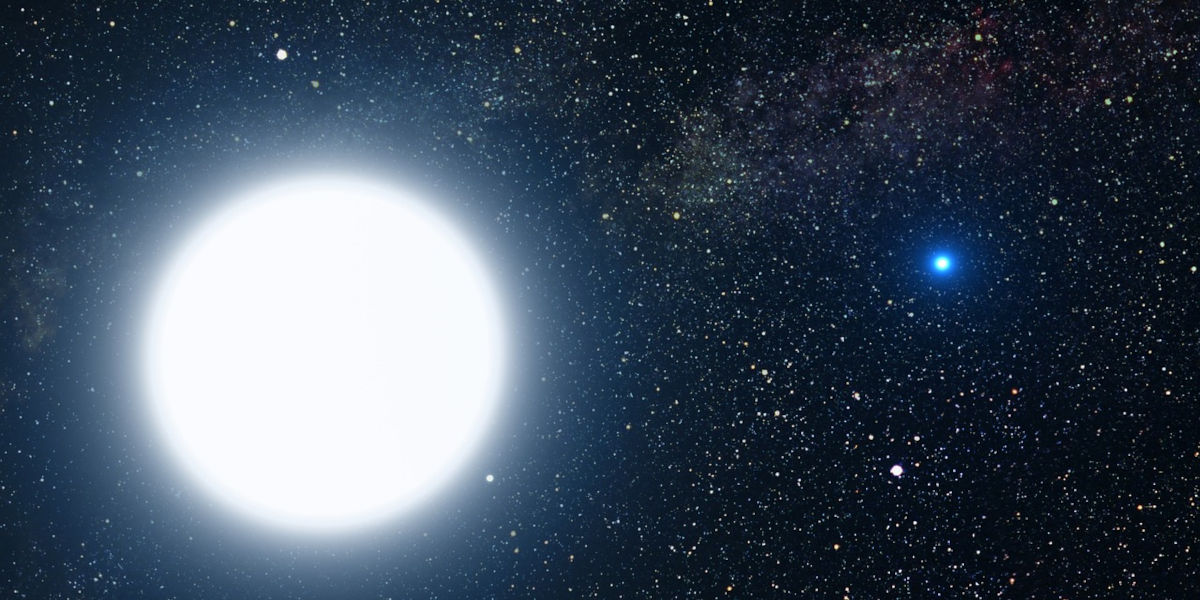The fascinating world of celestial objects brings us to a point of discussion that has always intrigued astronomers and astrophysicists alike: the life and beyond of stars. One primary object of such discussions is the White Dwarf, a small yet exceptionally dense star that emerges as a result from a regular star's 'death'. This article will delve into the mysteries surrounding White Dwarfs and their life cycle, the unique White Dwarf stars characteristics, and the intriguing process of how a star becomes a White Dwarf.
White Dwarfs and Their Life Cycle
A White Dwarf is what most stars, including our Sun, eventually become after they have exhausted their nuclear fuel. It is, in essence, the hot core of a star, left to cool for billions of years. The life cycle of a white dwarf begins with a star roughly bearing the size and mass of our Sun. When such a star uses up all its hydrogen fuel, it expands dramatically into a red giant, sloughing off its outer layers. Once the outer layers are expended, what remains is the hot core - a white dwarf.
White Dwarf Stars Characteristics
Despite being the remnants of their parent stars, white dwarfs possess several unique characteristics distinct from other stars. In the realm of space, where size often equates to power, white dwarfs prove a defiance to this rule. Actually, they are approximately the size of Earth, while simultaneously accommodating the mass of the Sun – this makes them incredibly dense. The density means that a mere teaspoon of white dwarf material could weigh as much as an elephant!
Additionally, these compact stars are typically composed of carbon and oxygen ions, enveloped in a thin layer of helium and hydrogen. Being bereft of nuclear fuel, they do not experience nuclear fusion and instead, shine due to their residual heat from their previous stage.
How Does a Star Become a White Dwarf?
The transformation of a regular star to a white dwarf follows a captivating process. Stars like our Sun burn hydrogen in their core, creating helium and releasing heat and light in the process. However, over billions of years, the hydrogen fuel eventually diminishes. The core contracts under gravity, consequently making the star expand and turn into a red giant.
As the star inflates, it ejects a significant amount of its mass out into space. Once this outer material is exhausted, the hot core remains. This core will eventually cool and contract under its own gravity, resulting in a tiny, dense, and extremely hot white dwarf. The illumination of the white dwarf fades away over the course of billions of years, marking the end of its transformation journey.
In this seemingly quiet demise, stars continue their existence in an unassumingly powerful and beautiful form of white dwarfs, serving as a testament to the perpetual cyclicality and mutable nature of the universe.
The Cycle of Stellar Evolution
In their old age, stars like our own sun undergo a transformative process that results in them becoming white dwarfs. These heavenly bodies, often overlooked for their more dazzling counterparts, tell a fascinating tale of life after death in the celestial realm.
Let's start our journey with the life of a star. Stars, similar to living beings, have a lifecycle - they are born, they live and grow, and eventually, they die. This cyclical process of birth, evolution, and death of stars is referred to as stellar evolution. Once a star has exhausted the hydrogen fuel in its core, it starts burning helium. This is where the transformation begins.
The star will expand and cool in its outer layers, ascending to become a red giant or a red supergiant if it is massive enough. Over time, these outer layers will be ejected, leaving behind the hot, dense core. This remnant, known as a white dwarf, is what we're interested in.
The Birth of a White Dwarf
Once a star has shed its outer layers and revealed its core, it's not quite a white dwarf yet. Its next step involves cooling and contracting under its own gravity. Throughout this process, the star's mass does not significantly decrease, but its volume does, leading to incredibly high densities. Picture our Earth reduced to the size of a teaspoon! That's how dense a white dwarf is.
Despite their name, white dwarfs are not always white. Their color, like other stars, depends on their temperature. Freshly minted white dwarfs will often shine with a brilliant blue-white light, a testament to their intense heat. However, devoid of nuclear reactions, these stars have no source of energy and will start to cool over billions of years, fading from a blue-white to a yellow-white, and finally dimming to a brown or black.
The Endurance of White Dwarfs
Even though it might sound paradoxical, the ultimate fate of these seemingly 'dead' stars is to burn out slowly and dramatically. White dwarfs will continue shining for billions upon billions of years, much longer than the age of our universe. This is because their cooling timescale is astronomically long. Eventually, they will cool down to a point where they no longer emit heat or light, and at this stage, they transform into another mystical entity of the cosmos - black dwarfs.
White dwarfs, therefore, are not merely celestial remnants. They symbolize a star's resilience, even beyond its lifetime. Their existence is a testament to the perpetual cycle of life and death and the intriguing transformation in between.
So, the next time you gaze at the night sky, remember: each twinkling star is on its unique journey of transformation, and even in death, there's a renewal of life. The cycle continues unabated, and the transformation of stars into white dwarfs serves as a fantastic example of the circle of life in the universe.




